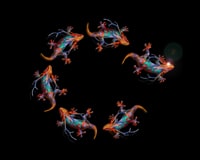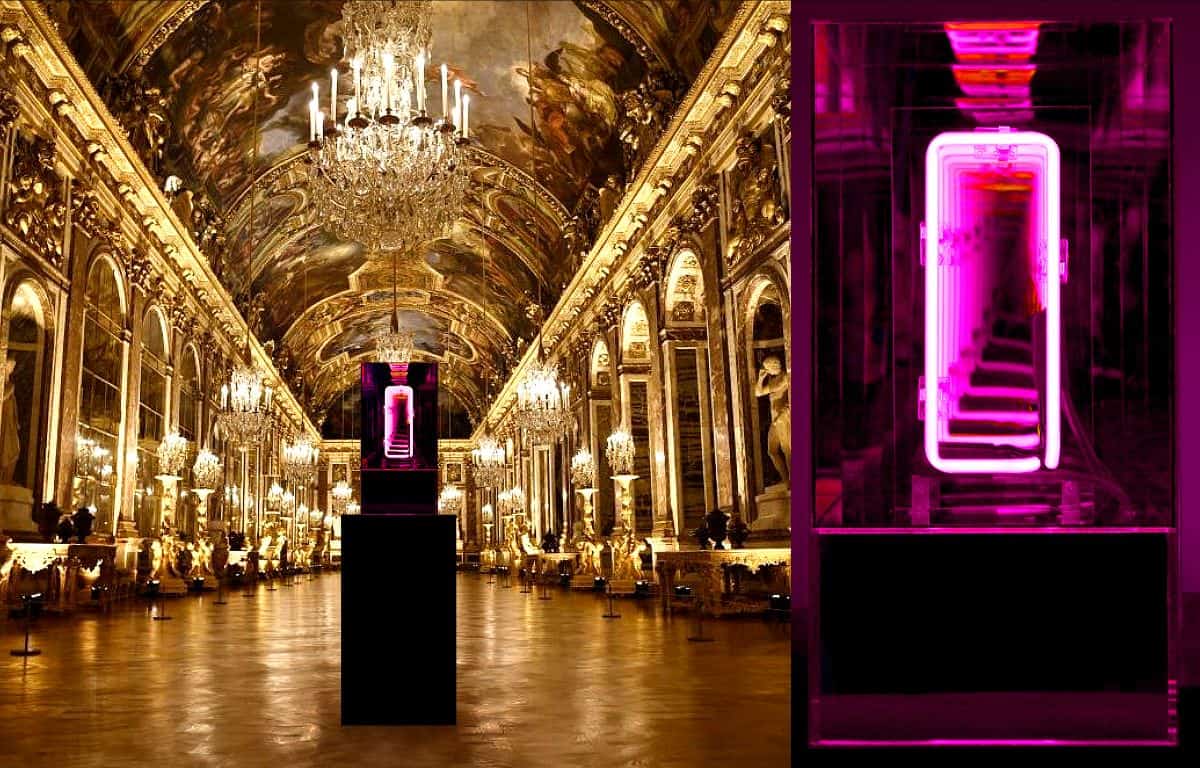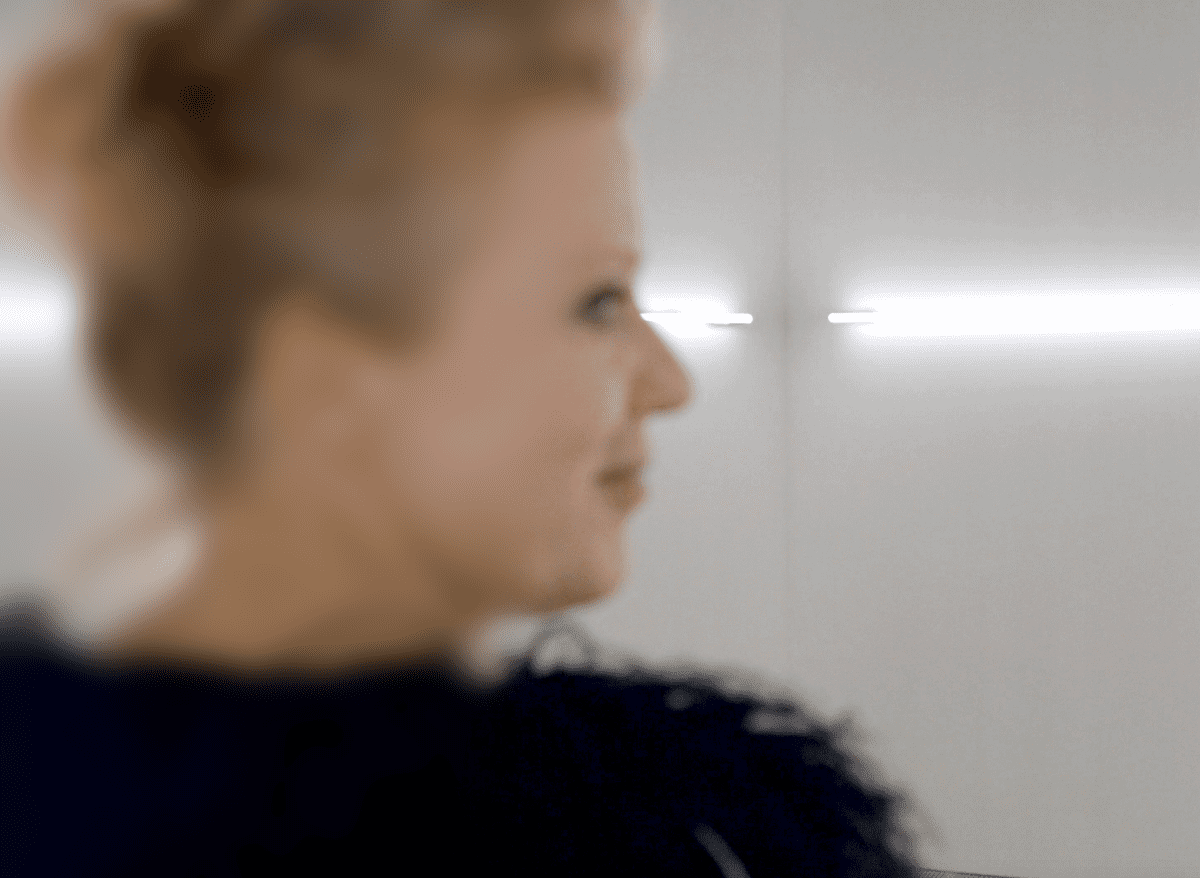CULTURAMA is the new destination for discoverers defending the best of Art, Architecture and Design in order to reinvent your contemporary lifestyle. As a bilingual webmagazine and audiovisual broadcaster with CULTURAMA STUDIO, CULTURAMA explores the trends of 21st century Art and Design, with its exclusive interviews, documentaries, articles, and mini-series. Hundreds of renowned artists have already participated in this adventure. CULTURAMA builds bridges between creators and executives, and as such, it becomes essential.

Summary

ANNE SENSTAD
«If the doors of perception were purified … »

Homemade
A unique experience shared throughout the digital space

Explorer
The best of Art, Architecture and Design of the 21st century.
Editorial
Everyday space

Thinkers are a source of inspiration for artists. This is the case of Anne Senstad, who created her exhibition How to Live Together based on the eponymous course given by Roland Barthes at the Collège de France in 1977, with the evocative subtitle of Novelistic Simulations of Some Everyday Spaces.
“If the doors of perception were cleansed, every thing would appear to man as it is, infinite.”
William Blake
PERCEPTION
ANNE SENSTAD
Eric of CULTURAMA: The technical passion that went into your Radical Light project, into the neon and chromatic research, suggests that innovation to improve lives is important to you. More generally, how would you describe your artistic approach?
Anne Senstad: It’s so rewarding when people recognize that my installations entail multiple layers of interdisciplinary work with the potential to effect the public’s well-being. A way of describing my artistic approach is through music. As I am writing this I am listening to Miles Davis’ Miles in the Sky. And that reminds me of how I often start with concepts in a realm of pure abstract creativity and inspiration, the place where the subconscious manifests itself.
It is then advanced into the conscious and practical foreground, where I mentally work out how to achieve an aesthetically meaningful work while preserving and transmitting its essence and substance, and simultaneously building a platform for the conceptual, or philosophic expression; in short, three stages of the holy triangle. So, it all happens jointly and sequentially, physically and technically, mentally and subconsciously.
Within that, I work with the cognitive system and the human aspect of the experiential — how light and color and matter and science will be experienced and perceived by the human body, how it affects our well-being. For example, one can say that concentrated amounts of a certain color, or color combinations, potentially affect our physical, mental and emotional states.


Eric: One of the elements you try to implement into your work, into the artistic experience you offer, is sound. For Radical Light you collaborated with JG Thirlwell to elaborate an intricate installation, and Elements III-Blue was accompanied by The Well-Tuned Marimba from composer and polymath Catherine Christer Hennix. In your earlier installations, sound and music are also taking a big part in creating a unique sensory experience. How do you come up with ideas for sound environments? Is it a mental, subconscious process, or more of a trial-and-error one?
Anne: Working with sound is yet another form of shaping and creating a cognitive experience. Sound, just like language, alters the realm of ideas; it is one of the highest forms of communication. Working with sound, in dialogue with space and in concert with the visual information, allows for a larger impact. I was inspired and guided by sound from a very early age. I see music as a tool of precision. The parallels between visual art, sound phenomena and human language amplify each other and thus create deeper experiences.
With JG Thirlwell, I usually invite him to compose sound for a piece that I have already developed the ideas and structure for. He then writes music based on our discussions and the original idea for the work. His compositions are based on his own language that defines itself by its capacity to embody vastness. People are generally sensorially conscious of audible space and space in general, on some level. We can react to the sound of the ocean, of the wind, or the echo in a cathedral. JG Thirlwell’s creative process complements mine, and there is mutual collaborative respect through our individual forms of creative languages.

In regards to Catherine Christer Hennix, our ideas and philosophical approaches are deeply interlaced. As a polymath, Hennix has a unique wealth of knowledge and experience in music, stemming from her rich past as a jazz musician in the ’60-’70s where she played with Don Cherry on Alejandro Jodorowsky’s The Holy Mountain soundtrack. She later developed her minimalist experiential sound through collaborations with philosopher and musician Henry Flynt, as well as LaMonte Young and his partner Mariela Zazeela. Additionally, she is a scholar in science, philosophy, mathematics and spiritual life — today she is a practicing Sufi.
Our collaborations are also affected by, among other things, being women artists from two different generations who, still today, face the same issues as women always have in the art world. Its male-dominated power hierarchy hasn’t changed much, except today the speculation seems to have changed focus to new forms of imperialism, one could say. Her compositions inspire me deeply, just like JG Thirlwell’s, and are intense journeys in their own right. Her sound works I’ve included in my installations seem to naturally harmonize with my creative voice. Another musician and composer I’ve worked with on a piece is Ulf Knudsen from Norway. I invited him to create a flute composition for a short documentary video on a 2013 installation Tears on a Coffin. He elaborated a beautiful and haunting piece mixing urban noise and flute. It fits the thematic concerns of this site-specific installation: grieving over a loss of society, identity and authenticity.
Tears on a Coffin | No Longer Empty | Ulf Knudsen & Anne Katrine Senstad ©
Eric: You are an artist but also a feminist. What was the most challenging in your artistic career?
Anne: I would say I’m a humanist most of all. Within that term comes equality, universal respect and dignity for all human beings. But as the world functions, with power being parcelled into gender-capitalist and imperialist systems, women are still second-class citizens at best, disenfranchised from our sovereign authority as human beings. It is a complex theme that opens a whole new discussion. I do welcome challenges though. Technical and logistical issues allow you to learn and expand your artistic knowledge.
Anything is possible, in my opinion. Challenges are almost a requirement when executing meaningful work as such demands more from you. What I would qualify as a serious challenge is probably on the relational level. Unfortunately, in the art world, as in any other line of work that implies money and power, you come across a lot of crooks, mercenaries, and the likes. Personally, I have had at least four or five unfortunate events that attempted to create dents in my career or personal life, unnecessarily wasting my time and money.
This doesn’t belong anywhere and is a form of predatory behavior that ruins what art, creative processes, and artistic collaborations are about. As in any industry, part of being an artist is to keep your eyes and ears open when navigating through the landscape of relations, and it’s wise to be prepared for possible losses and damages for the invested work, even with contracts and security enforced. But as we see today with the global pandemic, no one can know what tomorrow is preparing for us. Ultimately, one would want to create meaningful work and to have healthy collaborations at the same time.
Extrait de Mônosis/Monosis | Basé sur Comment vivre ensemble | Anne Katrine Senstad ©
Eric: You are one of the artists who persisted and worked through the pandemic, dealt with the lockdown in the United States, and its consequences. More specifically, in July, you finished and opened How We Live Together exhibition at the Yi Gallery in New York. What other projects did you plan for the months to come and how do you think would they be affected by the pandemic?
Anne: It was a very important process to pull through with How We Live Together as a political and philosophical statement about the human condition during the pandemic, to process what we were all going through via critical and contemplative optics, while it happened in real-time. Coinciding with the exhibition, I actually developed a cinematic collaboration with film and TV actor Bill Sage, who for many years worked closely with the independent film director Hal Hartley. He acted in films like American Psycho and TV shows like Law & Order and Boardwalk Empire. Ironically, Baudrillard proclaimed that American Psycho described aspects of the dehumanized postmodernist nightmare we are currently confronting. Since the theatre and film business is dependent on teamwork and audiences, this area of culture is still in flux with an uncertain future.
I was thinking about new ways of storytelling, all while thinking back to the role and impact of traditional radio theatre and its cinematic nature. I set out to collaborate remotely with Bill Sage on a monologue-performance short film series based on four sections from Barthes’ How To Live Together. The film series explores an autobiographical process of isolation that channels Barthes’ contemplations on various idiorrhythmic living formats as a way of understanding what we are faced with — living like monks, marginalized, separated from our loved ones. It is about our isolated states as humans and creative individuals unable to be free, to be creative. It is also a social-political commentary on the global pandemic crisis. The series started with Utopie/Utopia that was shown with Yi Gallery and in Art’s New Natures Digital Dynamics in Contemporary Nordic Art at the Streaming Museum.

Portal for perpetuity | Gallery Airmattress | Galerie Freight+Volume | Anne Katrine Senstad ©
Eric: In your opinion, how has the current crisis changed the lives of artists?
Anne: Overall, during and after lockdown the handling of artists and their work has in many instances been unacceptable.
However, we are resilient and stay creative. In the US people are resourceful in lack of governmental support, they work harder to help and create better infrastructures, to strengthen communities on the grassroots level. There is no alternative than to move forward, and today the situation calls for a stronger focus and healthier foundation to handle the challenges. I believe the next generation will become quite powerful from having lived through this era we are going through now. This exact moment we are facing is a time of such massive changes. So, I think it’s so important to revisit the true meaning of things and to enforce the idea of the common good, the sovereign good, for the survival of the human enterprise, as Roland Barthes proclaimed in How To Live Together.

HOMEMADE
PEPS & VITAMINS
Related episodes
Discover
CULTURAMA STUDIO
Editing team
- Barbara Marshall
- Grigoriy Manucharian
- José Man Lius
Contact us :
ericdeculturama@gmail.com
We wish to thank the volunteer contributors who cooperated in the creation of this webmagazine.
© Culturama.studio


